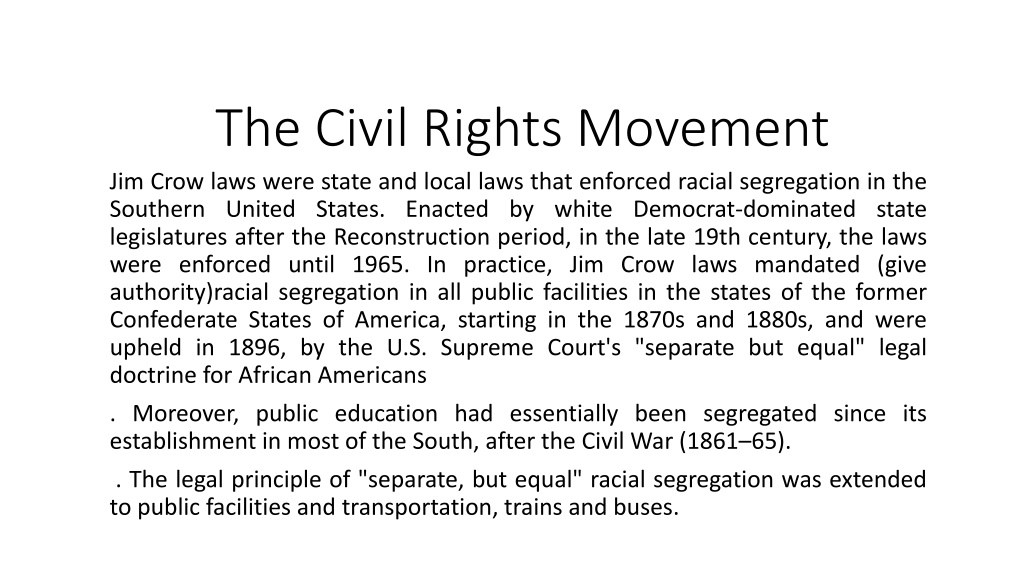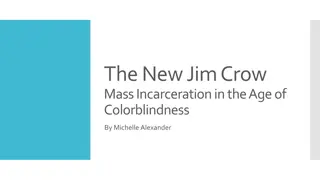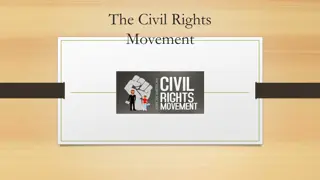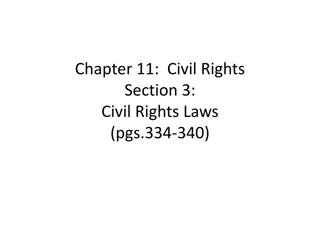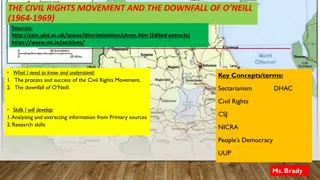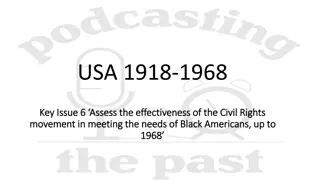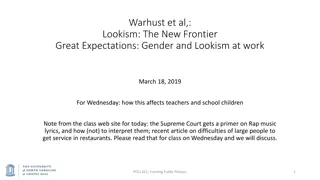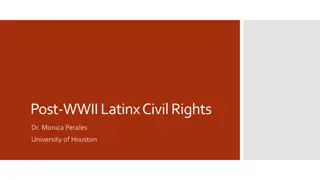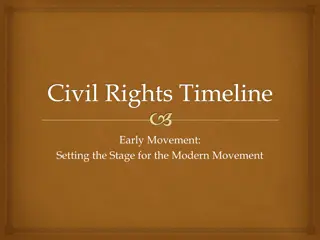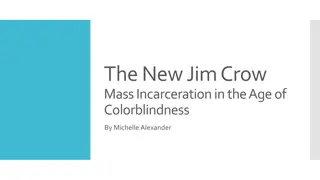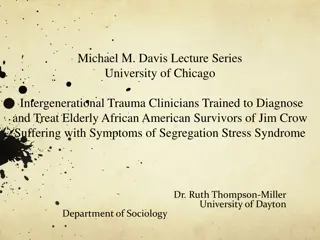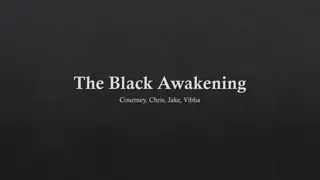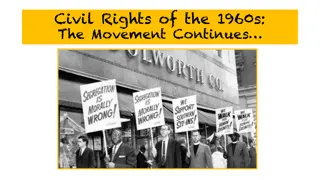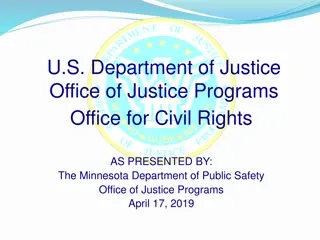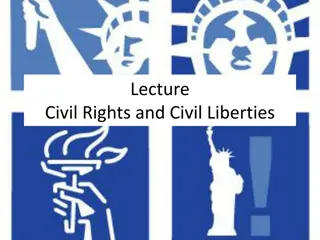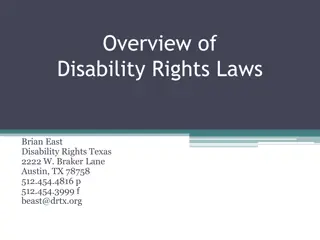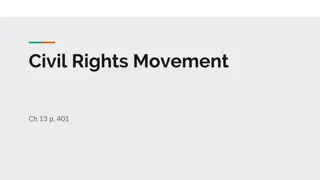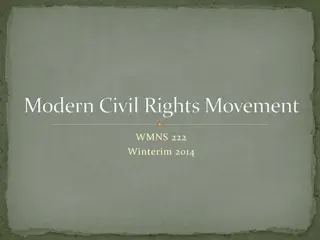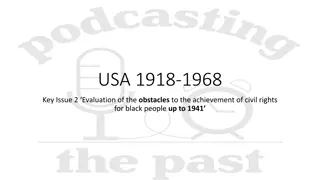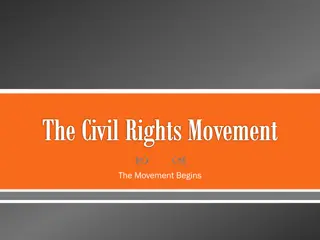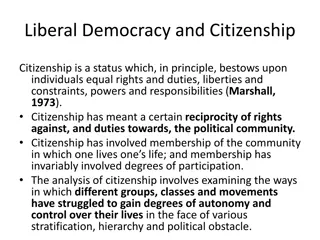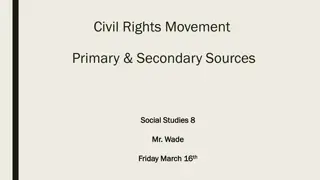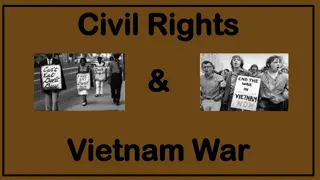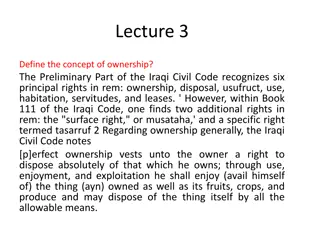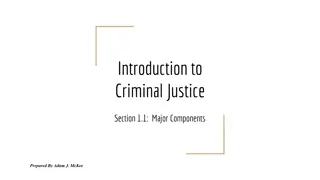The Civil Rights Movement and Jim Crow Laws in the Southern United States
The Jim Crow laws enforced racial segregation in the Southern United States from the late 19th century until 1965. These state and local laws mandated segregation in public facilities, perpetuating economic and social disadvantages for African Americans. The Civil Rights Movement gained momentum in the 1950s, challenging inequality and injustice. Actions like the Montgomery Bus Boycott led to significant strides in dismantling segregation and racial discrimination.
Download Presentation

Please find below an Image/Link to download the presentation.
The content on the website is provided AS IS for your information and personal use only. It may not be sold, licensed, or shared on other websites without obtaining consent from the author. Download presentation by click this link. If you encounter any issues during the download, it is possible that the publisher has removed the file from their server.
E N D
Presentation Transcript
The Civil Rights Movement Jim Crow laws were state and local laws that enforced racial segregation in the Southern United States. Enacted by white Democrat-dominated state legislatures after the Reconstruction period, in the late 19th century, the laws were enforced until 1965. In practice, Jim Crow laws mandated (give authority)racial segregation in all public facilities in the states of the former Confederate States of America, starting in the 1870s and 1880s, and were upheld in 1896, by the U.S. Supreme Court's "separate but equal" legal doctrine for African Americans . Moreover, public education had essentially been segregated since its establishment in most of the South, after the Civil War (1861 65). . The legal principle of "separate, but equal" racial segregation was extended to public facilities and transportation, trains and buses.
The Civil Rights Movement . Facilities for African Americans were consistently inferior and underfunded, compared to the facilities for white Americans; sometimes there were no black facilities. As a body of law, Jim Crow institutionalized economic, educational, and social disadvantages for African Americans. Legalized racial segregation principally existed in the Southern states (Delaware, Florida, Georgia, south Carolina, north Carolina, Virginia, Kentucky, ), while Northern racial segregation generally was a matter of fact enforced in housing with private covenants in leases, bank lending-practices, and employment-preference discrimination, including labor-union practices. . Jim Crow laws sometimes, as in Florida, part of state constitutions mandated the segregation of public schools, public places, and public transportation, and the segregation of restrooms, restaurants, and drinking fountains for whites and blacks. The U.S. military was already segregated. President Woodrow Wilson, a Southern Democrat, initiated segregation of federal workplaces at the request of southern Cabinet members in 1913.
The Civil Rights Movement A growing group of Americans spoke out against inequality and injustice during the 1950s. African Americans had been fighting against racial discrimination for centuries; during the 1950s, however, the struggle against racism and segregation entered the mainstream of American life. For example, in 1954, in the landmark Brown v. Board of Education case, the Supreme Court declared that separate educational facilities for black children were inherently unequal. This ruling was the first nail in Jim Crow s coffin. Despite these efforts, a new movement was born. In December 1955, a Montgomery activist named Rosa Parks was arrested for refusing to give her seat on a city bus to a white person. Her arrest sparked a 13-month boycott (pronvince) of the city s buses by its black citizens, which only ended when the bus companies stopped discriminating against African American passengers. Acts of nonviolent resistance like the boycott helped shape the civil rights movement of the next decade.
The Civil Rights Movement The origin of the phrase "Jim Crow" has often been attributed to "Jump Jim Crow", a song-and-dance caricature of blacks performed by white actor Thomas D. Rice in blackface. The Jim Crow persona was a theater character by Thomas D. Rice and an ethnic depiction in accordance with contemporary Caucasian ideas of African-Americans and their culture. The character was based on a folk trickster named Jim Crow that was long popular among black slaves. Rice also adapted and popularized a traditional slave song called "Jump Jim Crow" (1828).
The Civil Rights Movement The civil rights movement (also known as the African-American civil rights movement, American civil rights movement and other terms) was a decades-long movement with the goal of securing legal rights for African Americans that other Americans already held. With roots starting in the Reconstruction era during the late 19th century, the movement resulted in the largest legislative impacts after the direct actions and grassroots protests organized from the mid-1950s until 1968. Encompassing strategies, various groups, and organized social movements to accomplish the goals of ending legalized racial segregation and discrimination in the United States, the movement, using major nonviolent campaigns, eventually secured new recognition in federal law and federal protection of all Americans.
